Scientists have discovered The Endurance, the lost ship of the polar explorer Ernest Shackleton, at the bottom of the Weddell Sea in Antarctica. Watch a video of the ship sinking here:
Watch a sinking ship
Post Comment
Scientists have discovered The Endurance, the lost ship of the polar explorer Ernest Shackleton, at the bottom of the Weddell Sea in Antarctica. Watch a video of the ship sinking here:
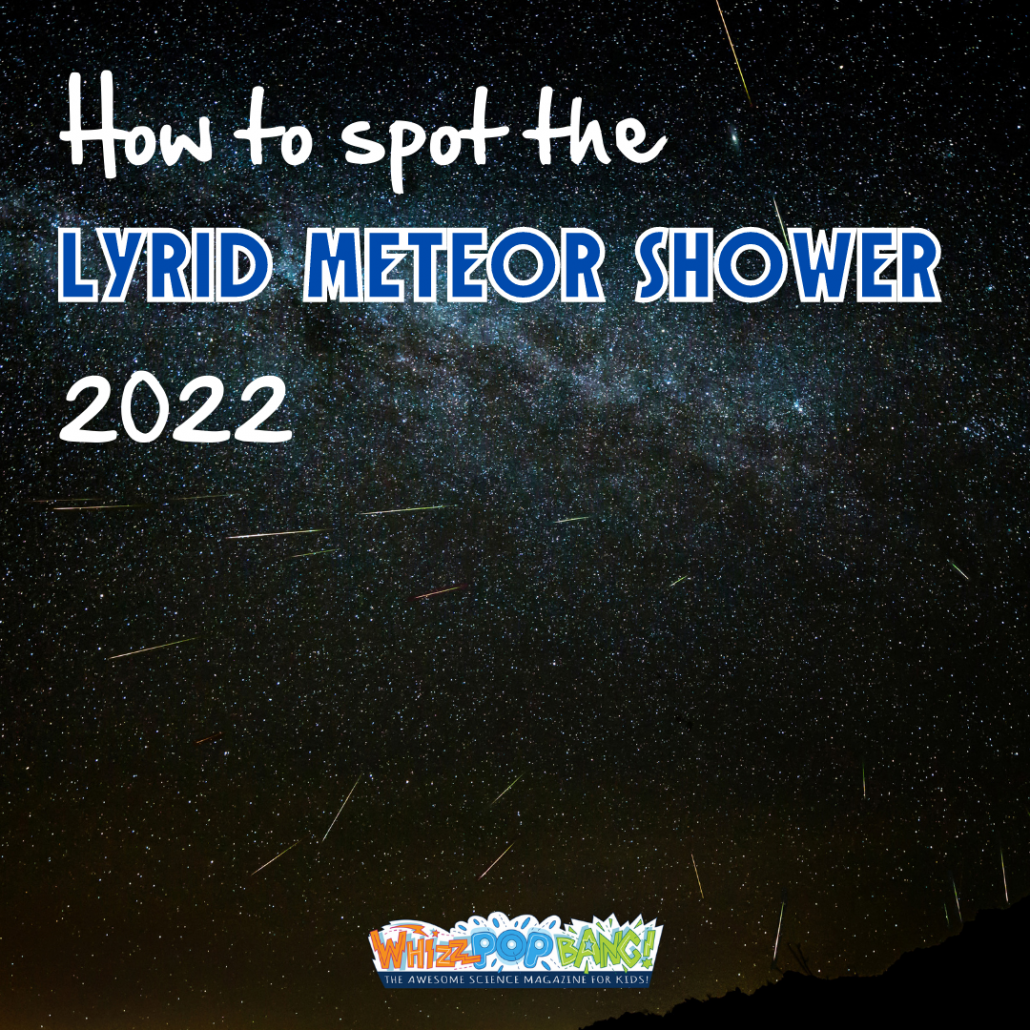
The best time to spot the Lyrid meteor in the UK in 2022 is on the night of 22nd – 23rd April. The Lyrids begin on the 14th April this year which is 2 days before a full moon so the sky will still be pretty bright at the peak of the shower which will make spotting meteors a bit tricky – but don’t be deterred! Follow these tips from the Royal Observatory in Greenwich for the best chance of meteor-spotting.
☄️Find a dark site with an unobstructed view of the sky.
☄️The best time to see the shower is in the early morning of the peak day, which this year is the morning of the 23rd April (the night of the 22nd April).
☄️Fill your view with the sky and wait! Lying on the ground is a great way to see as much as possible.
☄️Look towards the Vega constellation – here’s a handy map showing how to find it at this time of year thanks to Astronomy Now.
☄️Blanket optional but highly recommended. Reclining deckchairs make an even more comfortable way to view the sky.
☄️Remember to wrap up warm!
Image: Canva
Whizz Pop Bang is a top-quality, gender-neutral, advert-free science magazine for families everywhere. Each issue is packed with experiments, activities, amazing facts, puzzles, jokes, riddles and more. Find out more here and flick through a space-themed issue here!
Whizz Pop Bang is the world’s most awesomely amazing kids’ science magazine, bursting with hands-on experiments, facts and fun, and we want to help support you when teaching your children about science!
Here is a FREE science reading comprehension about harvest mice which will help you entertain, excite and educate any primary aged child! It’s been written by our experts to teach your year 2 child all about living things and habitats, your P3 child about biodiversity and interdependence.
Our free science worksheets are downloadable and printable and are designed for children from 6 to 12, but this downloadable activity is particularly perfect for year 2, P3 (Scotland) and 6-year-olds and 7-year-olds as they tie in with the relevant National Curriculum objectives and topics.
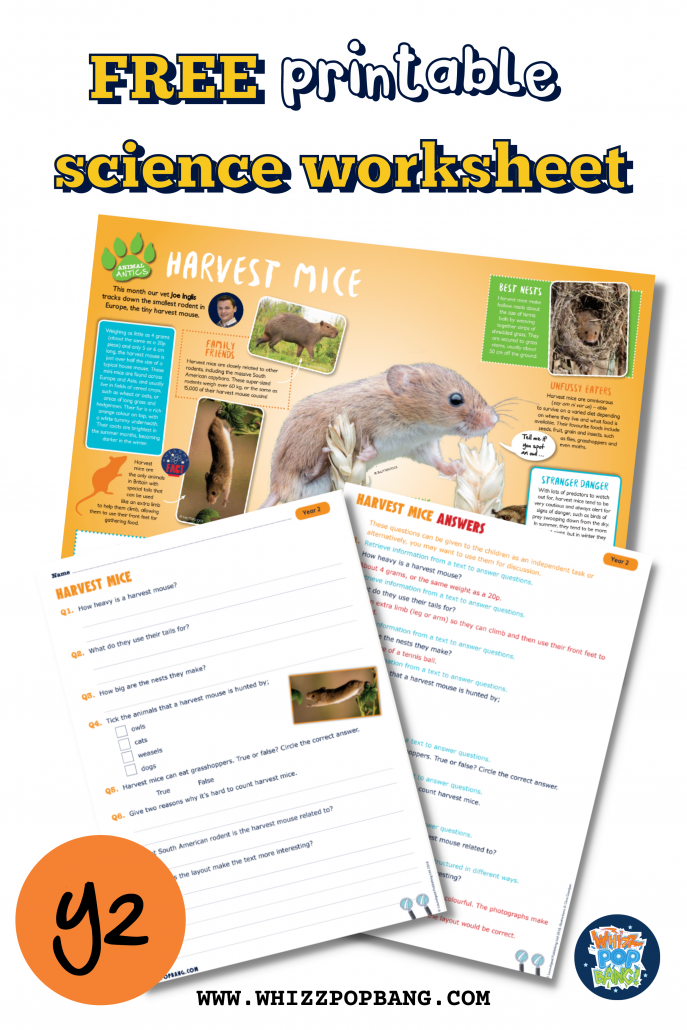
Read all about the smallest rodent in Europe, the tiny harvest mouse!
Find out how they are related to other rodents, how much they weigh, what they use their tails for, how they protect themselves from predators, where they build their nests and what their babies are called.
This downloadable reading pack includes:
– A reading spread about harvest mice for you to print or for your child to read on a tablet.
– Reading comprehension question sheet and answer sheet
Topic links: Year 2 living things and habitats, P3 Biodiversity and interdependence
The reading comprehension included here was designed to be read at A3 size, so text may appear too small when printed at A4. They work really well on a tablet or monitor, or you may need to print them on two pages of A4 if your printer allows.
If you have any comments or questions about our free year 2 science experiments and reading comprehensions, please leave a comment for us. Or do you have any science homeschool ideas or general home educating ideas for 6- and 7-year-olds? We’d love to hear from you!
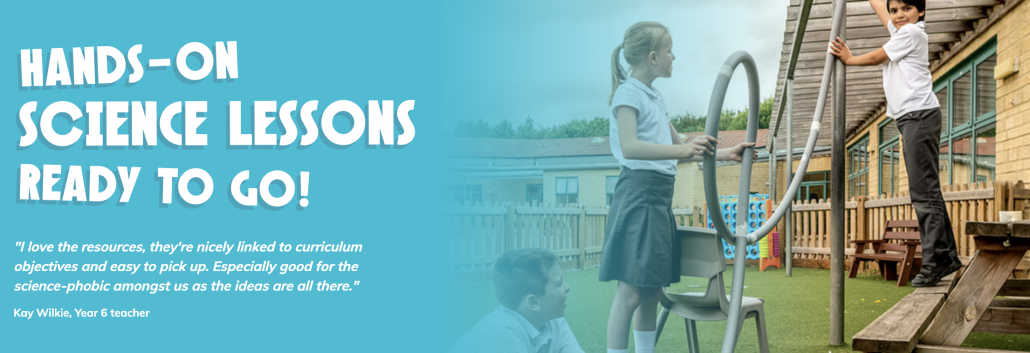
Whizz Pop Bang magazine and teaching resources are brilliant ways to enhance your school’s science teaching:
Prices from as little as £197.99 per year for a copy of Whizz Pop Bang magazine through the post each month and whole-school access to our ever-growing library of downloadable teaching resources, with unlimited teacher logins.
We’ve also launched a new individual membership option so teachers and home educators can access all of our amazing downloadable resources for just £20 for the whole year.
Whizz Pop Bang is the world’s most awesomely amazing kids’ science magazine, bursting with hands-on experiments, facts and fun, and we want to help support you when teaching your children about science!
Here is a FREE science reading comprehension about crabs which will help you entertain, excite and educate any primary aged child! It’s been written by our experts to teach your year 2 child all about living things and habitats, your P3 child about biodiversity and interdependence.
Our free science worksheets are downloadable and printable and are designed for children from 6 to 12, but this downloadable activity is particularly perfect for year 2, P3 (Scotland) and 6-year-olds and 7-year-olds as they tie in with the relevant National Curriculum objectives and topics.
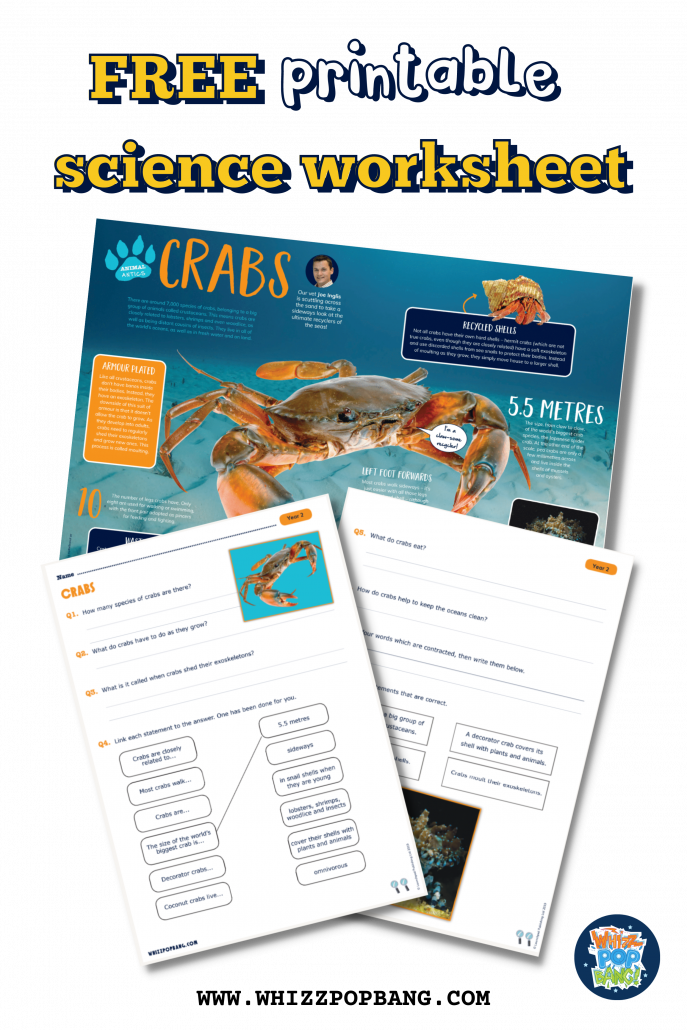
Read about the ultimate recyclers of the seas, crabs! Discover why these cool crustaceans have an exoskeleton, how they walk and more!
This downloadable reading pack includes:
– A reading spread about crabs for you to print or for your child to read on a tablet.
– Reading comprehension question sheet and answer sheet.
Topic links: Year 2 living things and habitats, P3 Biodiversity and interdependence
The reading comprehension included here was designed to be read at A3 size, so text may appear too small when printed at A4. They work really well on a tablet or monitor, or you may need to print them on two pages of A4 if your printer allows.
If you have any comments or questions about our free year 2 science experiments and reading comprehensions, please leave a comment for us. Or do you have any science homeschool ideas or general home educating ideas for 6- and 7-year-olds? We’d love to hear from you!

Whizz Pop Bang magazine and teaching resources are brilliant ways to enhance your school’s science teaching:
Prices from as little as £197.99 per year for a copy of Whizz Pop Bang magazine through the post each month and whole-school access to our ever-growing library of downloadable teaching resources, with unlimited teacher logins.
We’ve also launched a new individual membership option so teachers and home educators can access all of our amazing downloadable resources for just £20 for the whole year.
Calling all hedgehog fans, every year on the 2nd February we celebrate National Hedgehog Day! Celebrate these spikey critters by checking how hog-friendly your garden is. Hedgehog populations are sadly declining, therefore it’s critical that we do everything we can to protect them.
Here are some pointers on how to make your garden a hog’s paradise:
🦔 Shrubs or woody plants provide much-needed cover.
🦔 Native fruit trees, as well as hazel and hawthorn, will attract insects an important food source.
🦔 Wildflowers will also attract insects providing additional seasonal food.
🦔 Ditch the pesticides, unfortunately, toxic pesticides can kill hedgehogs, therefore organic gardening is the best option.
🦔 If you’re looking for a project, why not make a hedgehog house or a hedgehog highway (just a hole in your fence will do!).
It’s important that we protect the hedgehogs of Britain because not only are they adorable, but they help maintain the balance in the ecosystem. Conservationists refer to Hedgehogs as indicator species. This is because the numbers and behaviour of hedgehogs can tell us a lot about the health of their surrounding areas. Hedgehogs eat soil invertebrates, so a fall in hedgehog numbers can signify a decline in the quality of the surrounding environment. Their main source of food is insects which helps to keep insect population levels manageable, if hedgehog populations drop, insect numbers may rise posing unknown threats to the delicate balance of the ecosystem.
If your young ecologist is a subscriber to Whizz Pop Bang and would like to do more to help wildlife in your local area why not encourage them to complete our Wildlife Watcher badge.
Watch NASA astronaut Chris Hadfield control the International Space Station’s robotic arm that grabs cargo.
Find out more about what it’s like to live in space in Whizz Pop Bang: OUT OF THIS WORLD.
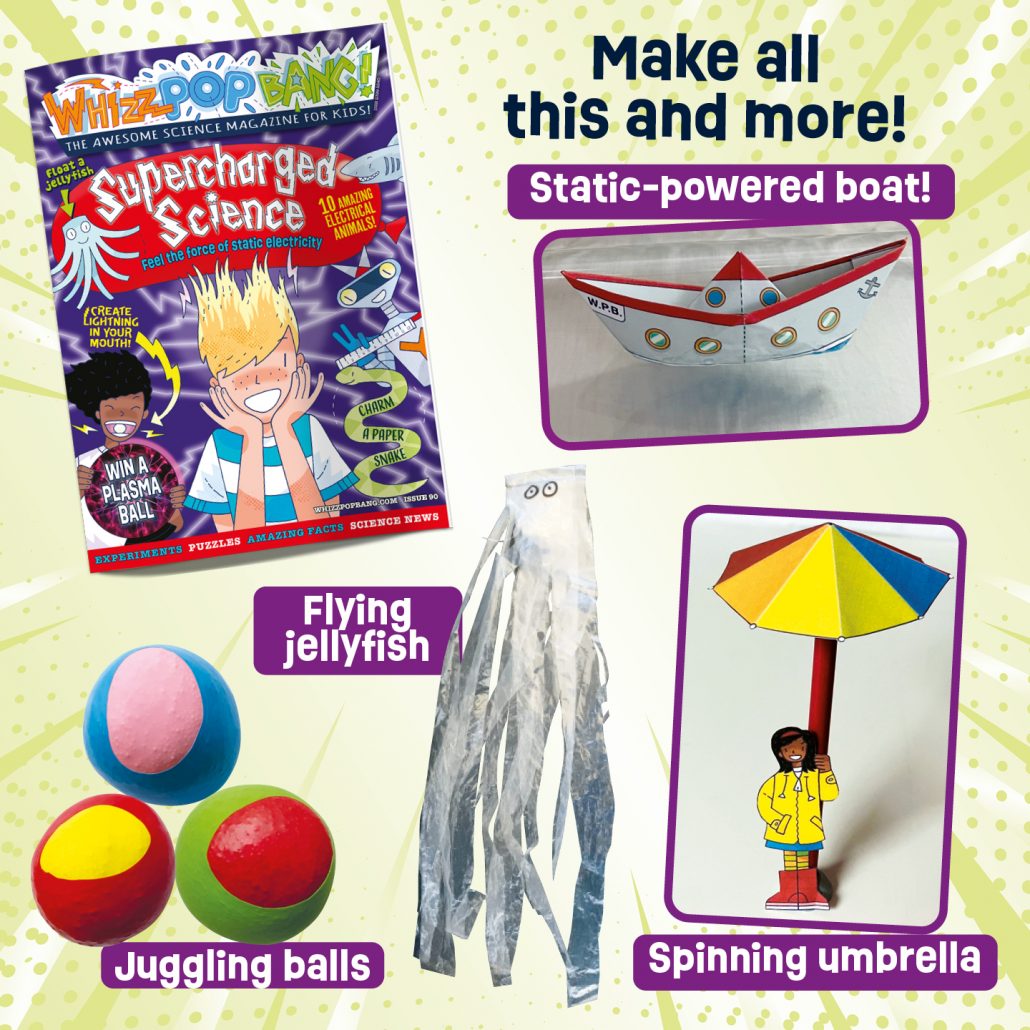
Fill your child with science wonder with a subscription to Whizz Pop Bang, the award-winning magazine for 6 to 12-year-olds. Watch their face light up with glee when their very own magazine zooms through the letterbox! Packed full of hands-on science awesomeness, it’s the gift that keeps of delighting, month after month.
While in space, astronauts lose the ability to balance. When they return to Earth, this makes turning corners, climbing stairs and even walking in a straight line very difficult until their balance comes back! Watch NASA astronaut Scott Kelly learn how to balance again.
Find out more about what it’s like to live in space in Whizz Pop Bang: OUT OF THIS WORLD.

Fill your child with science wonder with a subscription to Whizz Pop Bang, the award-winning magazine for 6 to 12-year-olds. Watch their face light up with glee when their very own magazine zooms through the letterbox! Packed full of hands-on science awesomeness, it’s the gift that keeps of delighting, month after month.
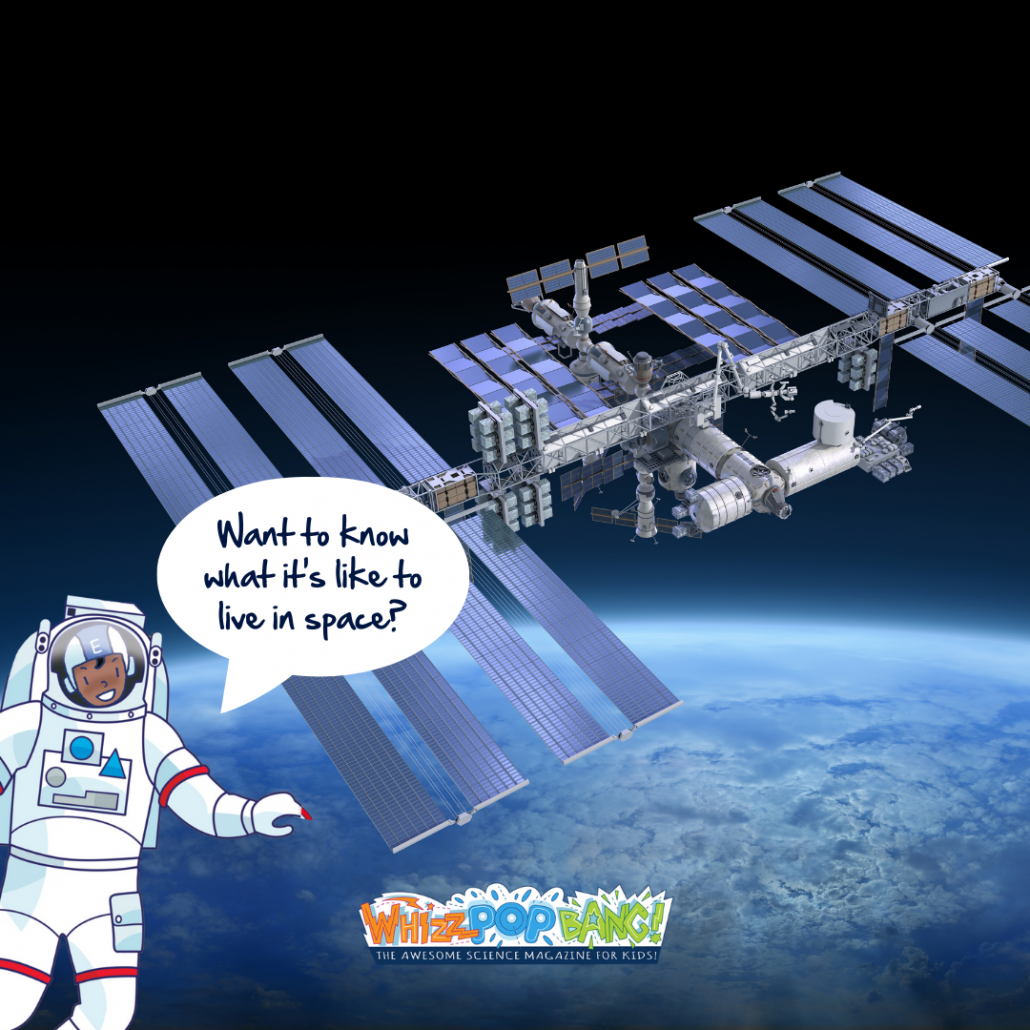
Astronauts have been living aboard the International Space Station for the last 21 years. Ever wondered how astronauts wee and poo, sleep and brush their teeth in microgravity? Find out here…
Find out more about what it’s like to live in space in Whizz Pop Bang: OUT OF THIS WORLD.
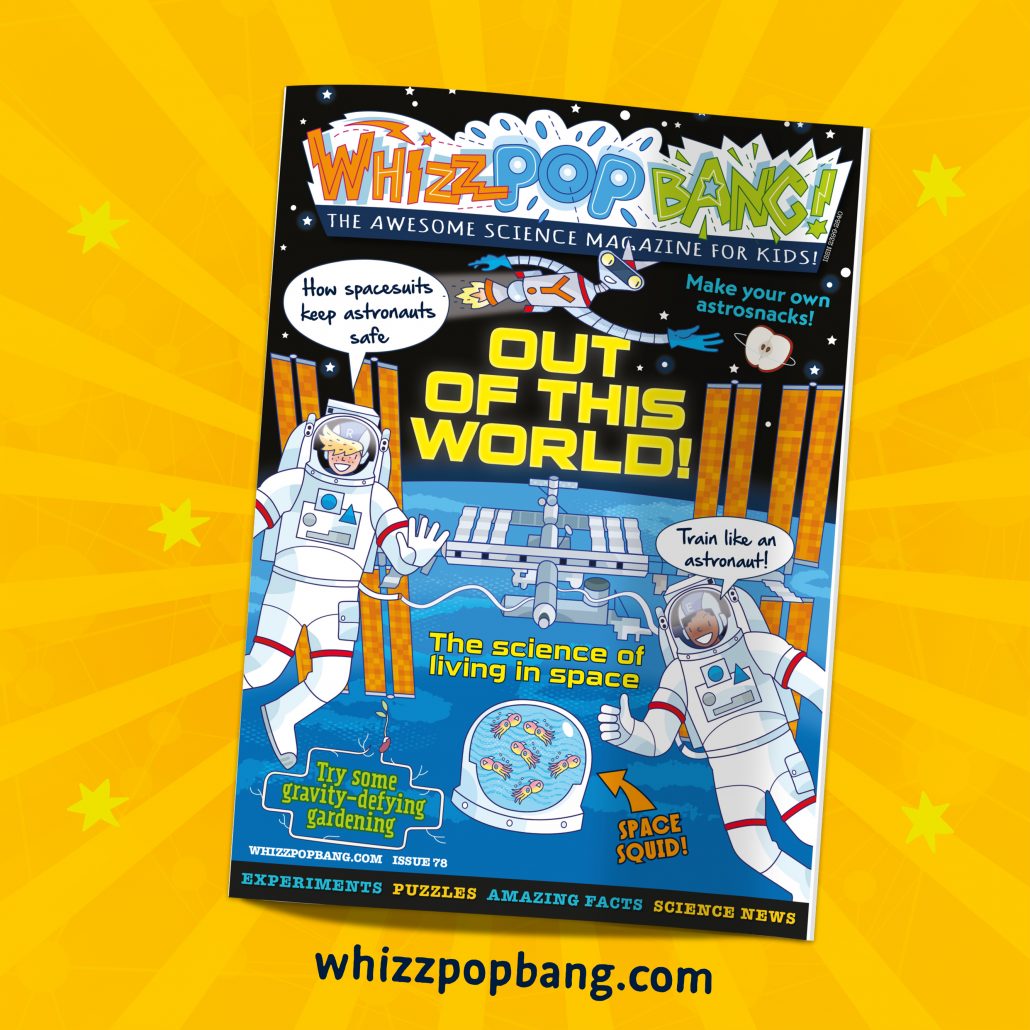

Fill your child with science wonder with a subscription to Whizz Pop Bang, the award-winning magazine for 6 to 12-year-olds. Watch their face light up with glee when their very own magazine zooms through the letterbox! Packed full of hands-on science awesomeness, it’s the gift that keeps of delighting, month after month.
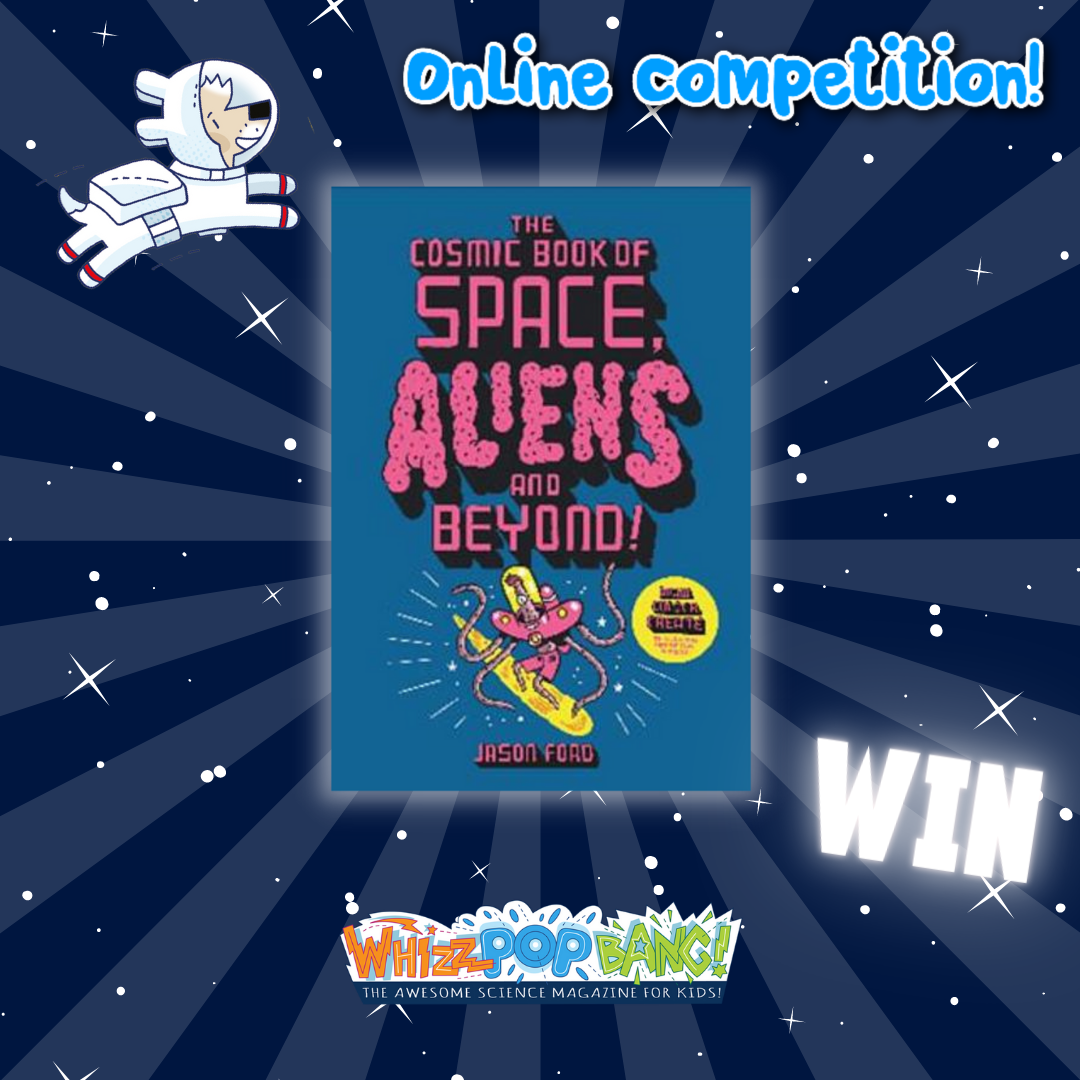
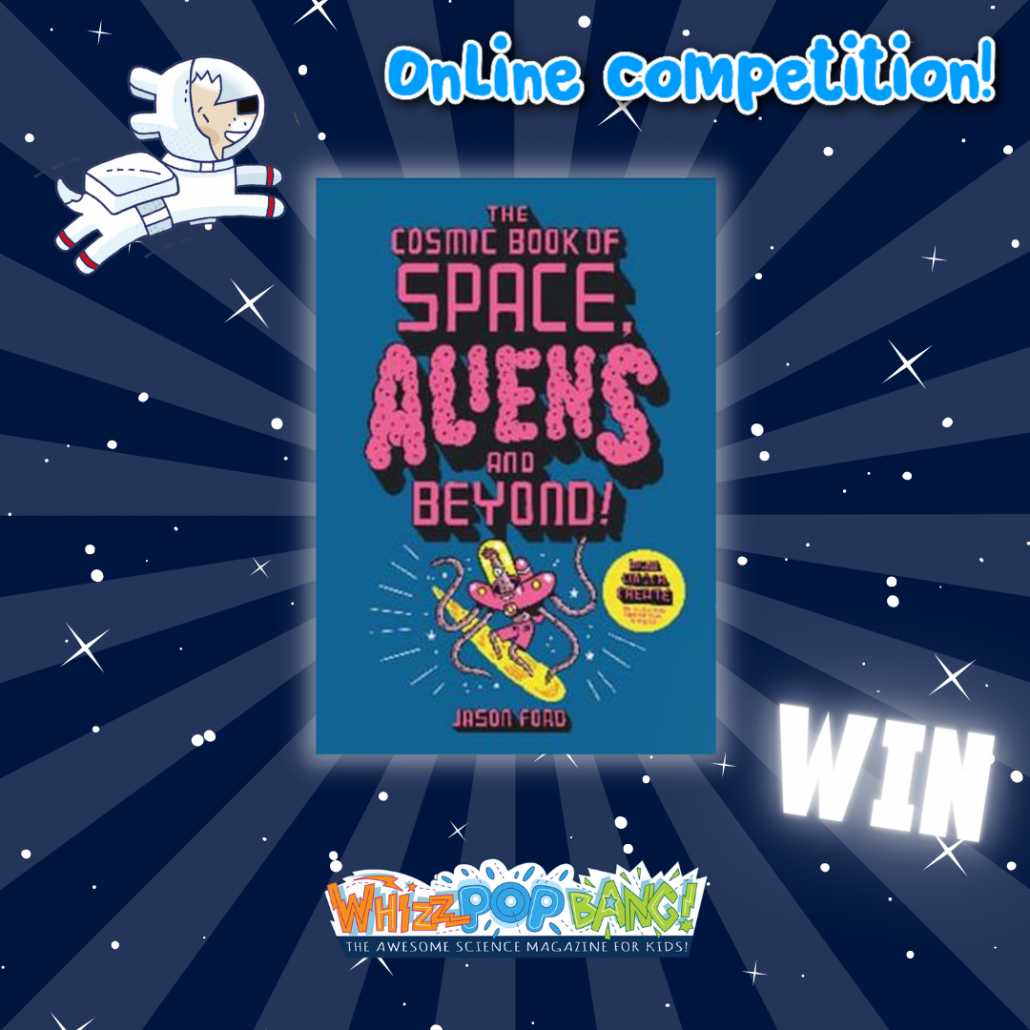
It’s your chance to win the galaxy’s most wacky activity book. Grab your pencils, Earthlings. Let our mission commence!
3, 2, 1…blast off! Are you ready to journey out of this world to discover what lies beyond? From space pirates and surfing aliens to galactic shark ships and mysterious planets, strap in, put on your alien mask and zoom through the stars for the ultimate cosmic activity adventure. We’ve got FIVE copies of The Cosmic Book of Space, Aliens and Beyond! to give away!
To win one of FIVE copies, just answer this question in the comments:
Which of these IS NOT one of Jupiter’s moons?
A Callisto
B Europe
C Ganymede
This competition closes at midnight on 31st January 2022. For full terms and conditions visit whizzpopbang.com/terms-and-conditions


Explore glow-in-the-dark science with PUTTY, SLIME, CRYSTALS AND MORE!
The days are getting shorter and the nights are drawing in but fear not, this fun STEM kit from Bandai is sure to brighten any dark evening! Inquisitive minds will love discovering the world of glow-in-the-dark by making glowing slime and growing their own crystals! We’ve got THREE Glow-in-the-Dark Mega Science Kits to give away!
The National Geographic Glow-in-the-Dark Mega Science Kit is an astounding collection of experiments and activities that all glow when the lights are out! Inside the kit, you’ll find a crystal growing set that produces a glow-in-the-dark crystal specimen you can proudly display.
There are two DIY slime packs in this kit as well, allowing you to mix and play with your own glow-in-the-dark purple and green slime! And glow-in-the-dark putty will astound kids as they use the included UV light keychain to draw pictures and words that glow when the lights are off!
There is so much included in this Mega Kit: one glowing crystal seed, two DIY slime powders in glowing green and glowing purple, two slime containers, one glowing putty in a storage tin, one wernerite rock, one UV light, and a full-colour learning guide that takes you through each experiment step by step.
The National Geographic Glow-in-the-Dark Mega Science Kit is available from Next!
To win one of THREE kits, answer this question in the comments:
Which of these means glow-in-the-dark?
A Phonetic
B Photosynthesis
C Phosphorescent
This competition closes at midnight on 30th November 2021. For full terms and conditions visit whizzpopbang.com/terms-and-conditions